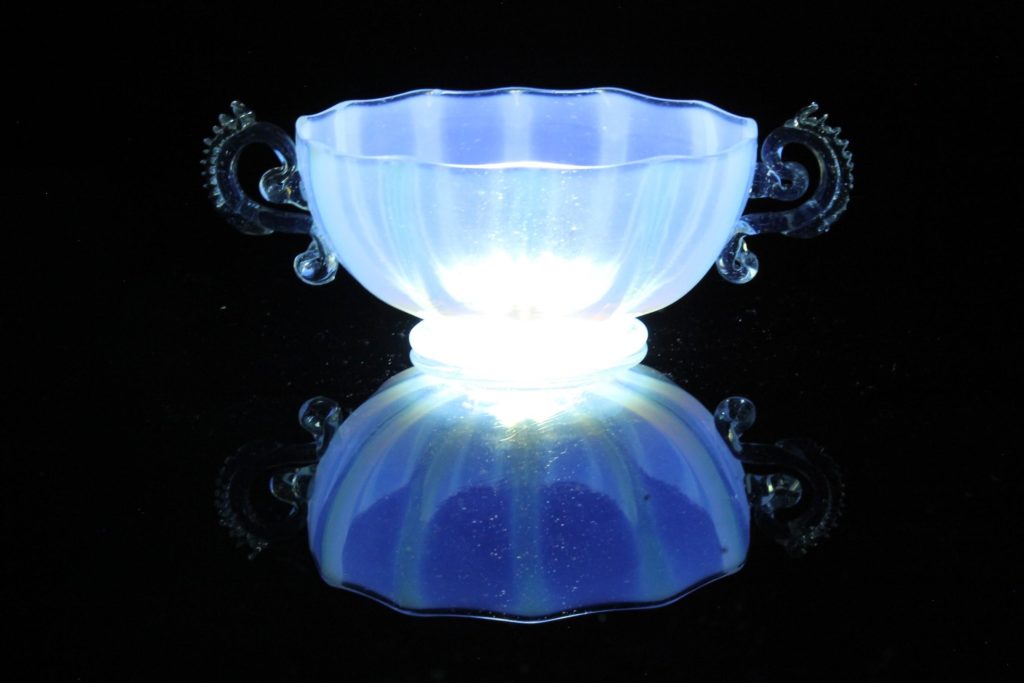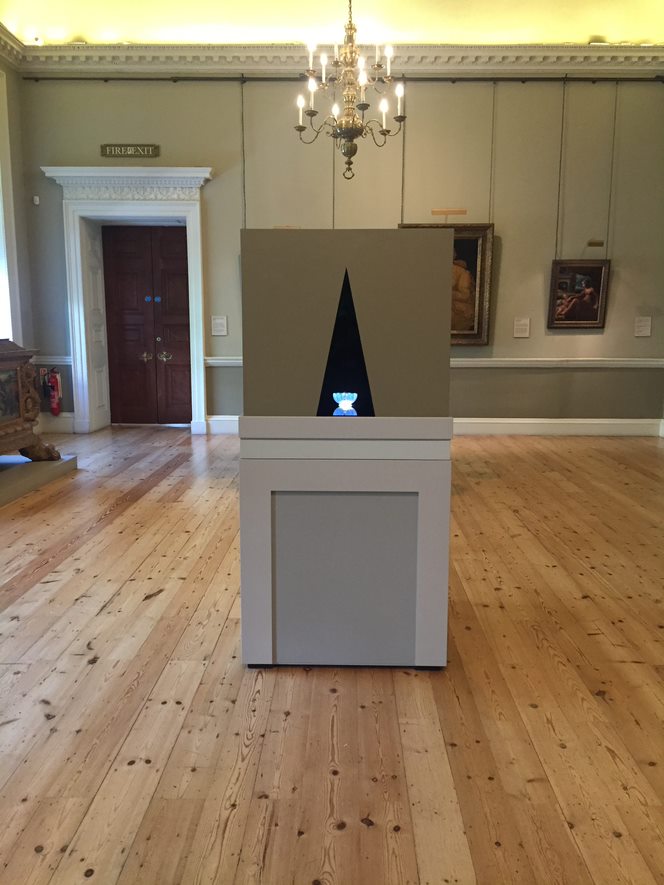
Bioluminescence in Jellyfish: Informing the Display
This glass bowl’s peculiarity of changing colour under certain light conditions resonates with the bioluminescent characteristic that some jellyfishes have – a unique ability to glow by themselves. This feature is generally produced by the mixture of two proteins: luciferin and luciferase. However, the Aequorea victoria jellyfish glows due to a specific protein called photoprotein, a type of enzyme which produces a brief flash instead of the steady light generated by the luciferase. A similar sparkle effect is perceived during the first seconds whilst this opalescent bowl is illuminated.
From my design perspective, I wanted to articulate all the embedded richness this delicate bowl contains, and to display it in such a way to convey the powerful secrets it revealed to me.

While illuminating the object from different angles, trying to elicit the fiery colours in it, suddenly the glass bowl seemed alive, like it was dancing. The movement of the light across its surface seemed to fill it with life and evoked the rhythmic flow of a jellyfish swimming in the deep waters of the sea.
I have tried to convey this by including a fading effect in the light that illuminates the bowl while on display.
Illuminating two glass objects from an angle. Melisa Leñero and Matthew Thompson.
Talking about the display, I got inspired by the contrast of the glowing effect of these sea creatures with the pitch black of the deep black ocean. I replicated this same juxtaposition of light and dark while choosing a jet black Perspex as the base and inserting a small light source directly under the bowl. On this mysterious-looking surface, which resembles the deep black waters of the sea, the delicate bowl seems to float and gently pulsate with light.
The triangles in the case were designed for different purposes. One is painted black and two others are a cut-out to reveal the bowl. The painted or trompe l’oeil triangle materialises the negative space of the beam of light that a lamp would produce if it was illuminating the object. The cut-out triangles reveal the opalescent glass bowl in a very stringent fashion, almost indicating there is nothing else to admire but the glass bowl.
The overall arrangement of the display is to convey the skeuomorphism of the glass bowl, in other words, the resemblance to another object embedded in it. While this piece is made of delicate glass with the intended purpose of containing something, the visual association based on its appearance indicate that it is a jelly sea creature with the particular characteristic of illuminating itself.

